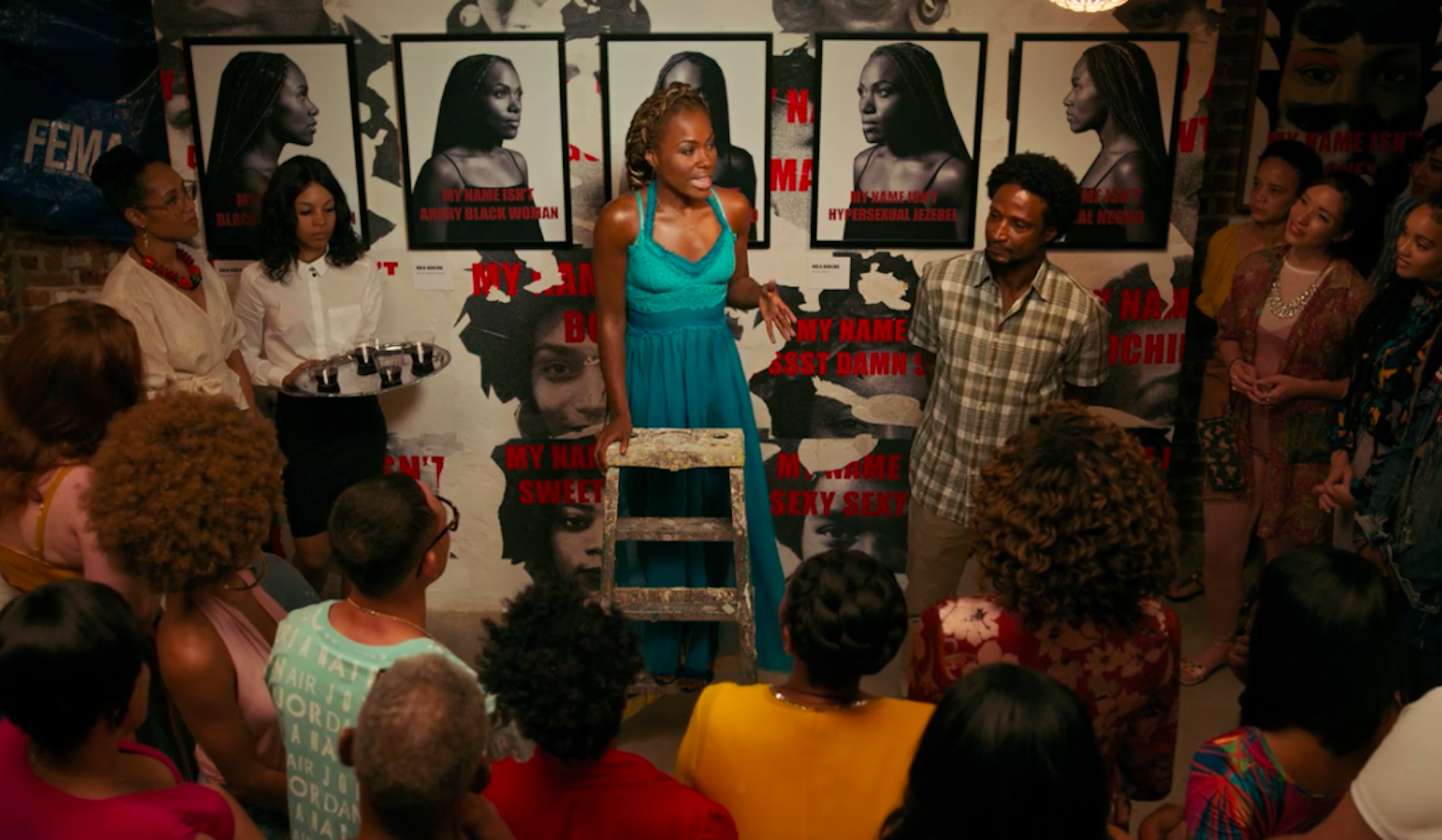Spike Lee Calls Black Artists to Action in This Season of Netflix’s ‘She’s Gotta Have It’

Credit to Author: Taylor Hosking| Date: Tue, 28 May 2019 13:14:02 +0000
Kneeling in front of a Zora Neale Hurston tribute piece on 150th and Riverside Drive, Nola Darling, the protagonist of Spike Lee’s She’s Gotta Have It, asks, “How does it feel knowing that your novel Barracoon went unpublished for 87 years, collecting dust, only now to see the light of day?”
In the second season of the series, Lee dives deep into Nola’s personal journey as a radical Black artist who refuses to compromise her art for money, while being confronted by the uncertainty of not knowing when her work will pay off in a world that pressures Black artists to play nice in white-dominated establishments. The season comes at a time when the creative class of Brooklynites that birthed Lee, Chris Rock, and many others of their generation is fully under threat as rents skyrocket in rapidly gentrifying, historically Black neighbourhoods. In the art world, major institutions like the Whitney Museum have made public efforts to showcase more artists of colour, but have also given those artists the cold shoulder for speaking out against injustice in the institutions. Nowadays, it can be difficult for young, radical artists to see which way is up, but through Nola’s story, Lee offers a type of roadmap for navigating the historically segregated sphere.
Now that the show doesn’t have to recreate a modern version of the 1986 movie’s plot, it’s more tied to current events as characters face the consequences of gentrification, discuss the politics of offensive public statues, and even visit Puerto Rico in the aftermath of Hurricane Maria. The second season creates a sense that society desperately needs an intervention from artistic truth-tellers. There are a number of people in Nola’s life who push her to make more commercial art, but her true saving graces are those who understand what she can bring to our current political climate and encourage her to stick with her righteous path, even when she’s unsure what that will look like.
Beyond the encouraging plot line, Lee actively uses Nola’s story in practical ways to teach aspiring creatives how they can build a viable lifestyle for themselves. Her adventures take us into spaces that help emerging Black artists get on their feet, like the MoCADA Museum and a fictional Black artist retreat on Martha’s Vineyard that’s dreamy enough to inspire Google searches for similar programs. Importantly, the people in those spaces aren’t stereotypical pretentious Black characters or couch-surfing hippie types that “need to grow up.” Instead, Lee showcases actual successful Black artists in a montage where they introduce one of their pieces, allowing their dignified yet down-to-earth appearances to speak for themselves. (That group includes newer powerhouses like Juliana Huxtable and Doreen Garner, as well as established icons like Carrie Mae Weems and LaToya Ruby Frazier.) The world Nola discovers—based largely on reality—is full of Black artists that are taken seriously and celebrated, despite forces in society that can paint their dreams as frivolous or unrealistic.
The show’s meta context of Lee’s own success in his artistic career also helps drive home the point. A big outdoor scene in the season’s fifth episode takes place at an annual public block party that Lee throws in honor of Prince called the “Purple People Party.” The scene, and the real life party, are a powerful way to reclaim public space in the rapidly gentrifying neighborhood of Bedford Stuyvesant where newcomers have tried to stomp out Black street culture with 911 calls for decades. His mark on Brooklyn can also be felt in other scenes, like when an angry mob protests a real estate firm’s new Fort Greene office in a moment that echoes the standoffs in Lee’s Do the Right Thing. At this stage in his career, he’s using film to continue shedding light on social issues while depicting a world that’s already impacted by his decades of art activism.
By the time Nola gains the courage and inspiration to tackle her first solo show with a disturbing, explicit piece at its center, she’s able to let the divided reactions roll off her back. She’s developed more of a backbone in her personal relationships and a confidence in her artistic direction, which she desperately needed to navigate the pressures facing young artists today. The show’s title once referred to Nola’s non-monogamous sex life, but now encompasses who she is as a creative, too. And through honing in on that, Lee is able to uplift a different type of alternative lifestyle at a key moment for society.
Sign up for our newsletter to get the best of VICE delivered to your inbox daily.
Follow Taylor Hosking on Twitter and Instagram .
This article originally appeared on VICE US.